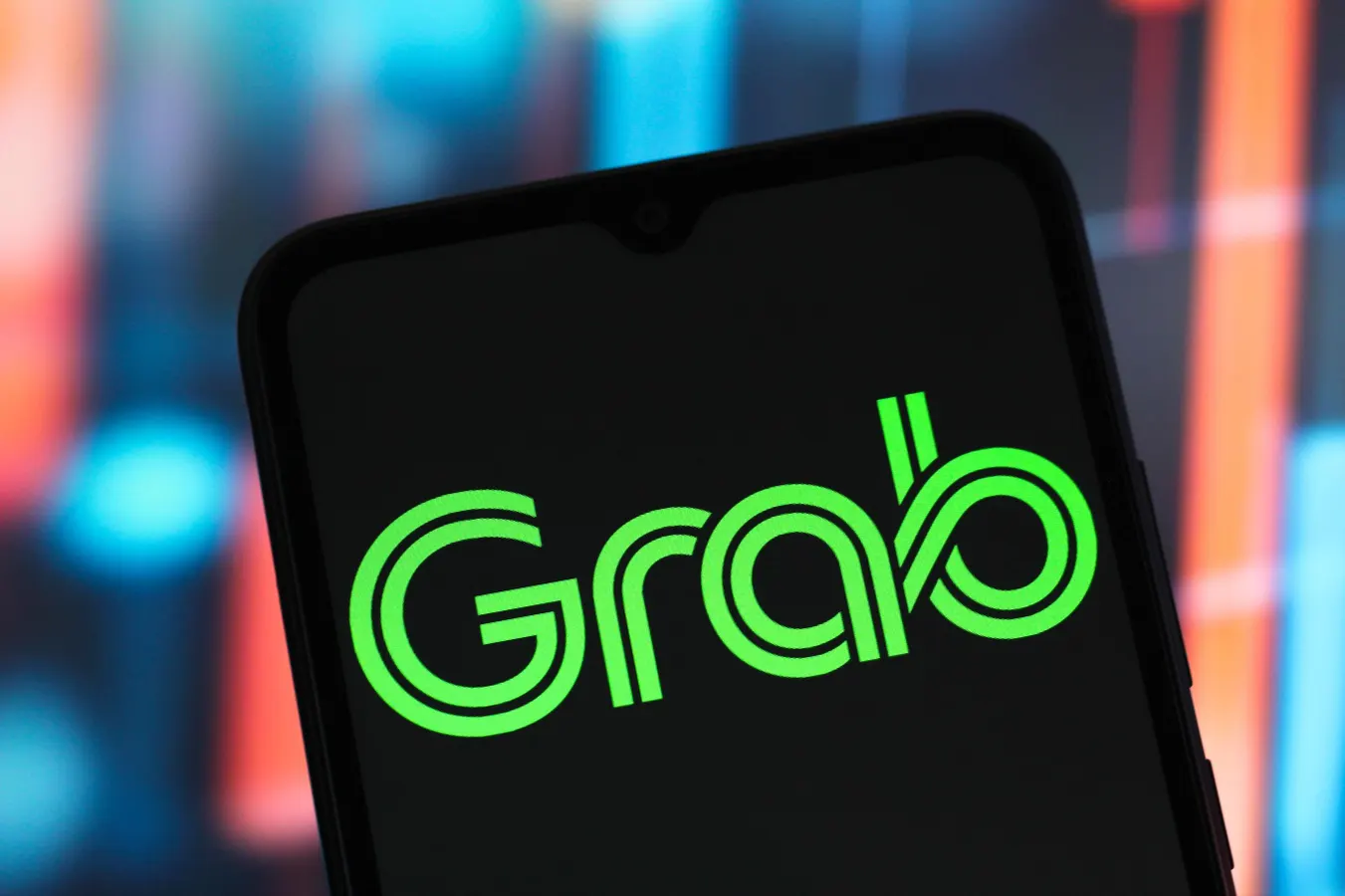By Contributor,Thomas Fuller,Trefis Team
Copyright forbes

CANADA – 2025/06/11: In this photo illustration, the Grab Holdings Limited logo is seen displayed on a smartphone screen. (Photo Illustration by Thomas Fuller/SOPA Images/LightRocket via Getty Images)
SOPA Images/LightRocket via Getty Images
Grab Holdings Ltd. (NASDAQ: GRAB), the foremost super-app in Southeast Asia, has been steadily bouncing back after years of significant expenditures and doubts from investors. Over the past year, Grab has increased by more than 70%, significantly surpassing many main indices and a wide range of tech competitors during the same timeframe. Notably, Grab recently reported its first positive free cash flow for 2024 and in the trailing twelve months, and it continues to demonstrate year-over-year revenue growth exceeding 20%.
Shares are still trading at lower levels, even as the company progresses toward profitability and broadens its ecosystem beyond ride-hailing and delivery to include payments, lending, and digital banking. The pressing question now is whether Grab’s stock could realistically double from its current position, affirming its super-app strategy. However, if you desire less volatility than holding an individual stock, consider the High Quality Portfolio. It has consistently outperformed its benchmark — a mix of the S&P 500, Russell, and S&P MidCap indices — attaining returns of more than 91% since its inception. Additionally, see – Cloudfare – NET Stock To $300?
Core Thesis: The Path to a Re-Rating
Grab’s revenues have been growing at a robust rate, propelled by mobility and delivery recovery following the pandemic and early success in financial services. Analysts predict substantial growth in consolidated revenues over the next few years, potentially exceeding $5–6 billion by 2026. However, the stock is currently trading at a low valuation — barely 1x forward sales — compared to fintech and marketplace companies in emerging markets that typically command 4–6x multiples. If Grab can maintain annual revenue growth of 20–25% and solidify its adjusted EBITDA margins into positive territory, a moderate re-rating to 2x sales would suggest a doubling of its market capitalization. The calculation is simple: increased revenue, combined with just a small change in market valuation of Grab, could unlock significant upside.
Key Growth Drivers
The narrative rests on several key factors. Firstly, mobility demand is rebounding significantly across Southeast Asia as travel and urban activity return to normal, granting Grab pricing power and scale advantages. Secondly, delivery, which was previously a subsidy-driven operation, is becoming profitable as incentives decrease and logistics efficiency improves. Thirdly, the growth of GrabFin—which includes payments, lending, and insurance—provides a pathway to higher-margin revenue streams that are less dependent on slim ride-hailing or food delivery margins. The super-app ecosystem also enables Grab to cross-sell services and increase per-user monetization, a benefit that competitors find challenging to replicate. Crucially, Grab has commenced generating positive adjusted EBITDA, a key milestone that could attract institutional investment as losses diminish further.
Risks to Watch
Nevertheless, the route is not without challenges. Southeast Asia continues to be a highly competitive arena, with competitors such as GoTo and Foodpanda exerting pressure on pricing and market share. Regulatory scrutiny is increasing, especially concerning driver compensation, commissions, and fintech licensing, which could limit margins. The company’s low-margin operations still present execution risks—minor slip-ups in cost management or incentive discipline could undermine profitability. Furthermore, while revenues are on the rise, Grab’s capital intensity remains considerable, making the balance sheet a critical aspect for investors to consider.
MORE FOR YOU
The Verdict
At current valuations, Grab is trading at a discount in relation to its growth potential, despite its steady progression toward profitability and a diverse ecosystem. If revenues increase towards $5–6 billion and valuation multiples merely revert to normal, the stock could reasonably double from this point. The risk-reward scenario remains tilted: the downside is linked to execution missteps and regulatory disruptions, but the upside indicates the potential for Grab to become the leading digital platform in Southeast Asia.
For investors willing to accept volatility in exchange for exposure to one of the world’s fastest-growing digital markets, Grab at its current valuation appears to be a recovery narrative that is still in its early stages.
Investors should be ready for considerable volatility and the possibility of significant losses should market conditions worsen or the company does not execute its ambitious growth strategy. Although the potential for a 2x increase is mathematically plausible based on expected revenues, it necessitates impeccable execution in a swiftly changing and competitive environment. Now, we apply a risk assessment framework while constructing the Trefis High Quality (HQ) Portfolio, which, comprising 30 stocks, has a history of comfortably outperforming the S&P 500 over the last four years. Why is this the case? As a collection, HQ Portfolio stocks delivered better returns with lower risk compared to the benchmark index; providing a less volatile experience, as shown in HQ Portfolio performance metrics.
Editorial StandardsReprints & Permissions



